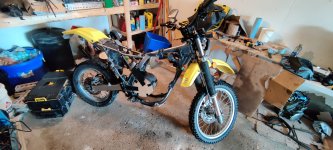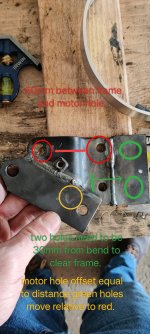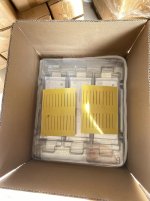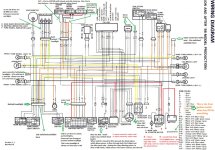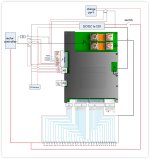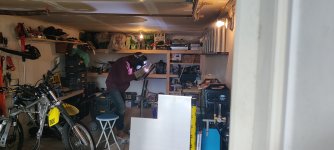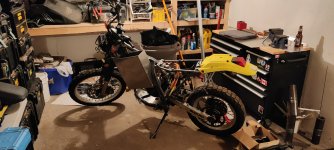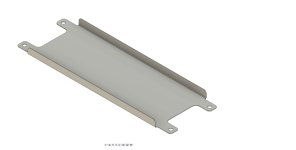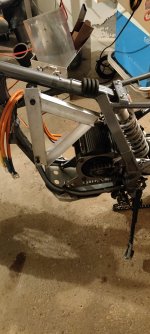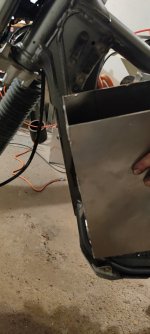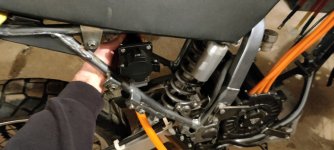Hey all and welcome to the build thread for my post '96 DR650. This conversion has been an idea in my head for almost as long as I have owned the bike. I told myself that when the engine gives out the bike will get a new life in the form of a conversion. Progress thus far has consisted of stripping the bike of it's petrol burning components and honestly a lot of staring at where I need to fit a motor.
Here are a few of my targets and potential hardware considerations for the build.
Weight: Under 175kg. This is equal to it's petrol setup with a full tank
Power: 15kW cont, 40kW for 30s. Peak 80kW.
Capacity: 12-15kwh of pouched NMC. Possibly 73Ah Farasis pouches.
Regenerative abilities via regen lever in replacement of the clutch lever.
Controllers, looking for something around 100v with 300-400 battery amps and 800-1000 phase amps.
Motors under consideration are Zero 75-7(r) and the QS180.
As the bike sits with engine removed I have about 90kg to meet my target weight. I figure 70kg of battery with the rest going to the motor and controller. This isn't a hard limit but I would like the bike to ride and feel as it did before. The 30s power level is about 20% more than a standard gas burning DR. I don't suspect the cush hub and drive-line will have issues with that power level. Peak power may cause issues including relocating the front wheel closer to the sun. I would like this project to end up as clean as possible. I've seen some controllers that offer stepdowns like the 3shul. That interests me as it reduces component count and keeps the build clean and lean. I know I'm going to have a challenge in fitting that much battery.
I thank all who have already contributed their collective knowledge and I look forward to spending many hours reading. Advice regarding motor, controller, contactor and BMS is much encouraged. I am looking to source a motor as soon as possible as I feel that it's location (and hopefully no requirement for a jackshaft!) is crucial to getting on with the rest of the build.
If you read this far with no enticing photos then many thanks from me.
-Mug
Here are a few of my targets and potential hardware considerations for the build.
Weight: Under 175kg. This is equal to it's petrol setup with a full tank
Power: 15kW cont, 40kW for 30s. Peak 80kW.
Capacity: 12-15kwh of pouched NMC. Possibly 73Ah Farasis pouches.
Regenerative abilities via regen lever in replacement of the clutch lever.
Controllers, looking for something around 100v with 300-400 battery amps and 800-1000 phase amps.
Motors under consideration are Zero 75-7(r) and the QS180.
As the bike sits with engine removed I have about 90kg to meet my target weight. I figure 70kg of battery with the rest going to the motor and controller. This isn't a hard limit but I would like the bike to ride and feel as it did before. The 30s power level is about 20% more than a standard gas burning DR. I don't suspect the cush hub and drive-line will have issues with that power level. Peak power may cause issues including relocating the front wheel closer to the sun. I would like this project to end up as clean as possible. I've seen some controllers that offer stepdowns like the 3shul. That interests me as it reduces component count and keeps the build clean and lean. I know I'm going to have a challenge in fitting that much battery.
I thank all who have already contributed their collective knowledge and I look forward to spending many hours reading. Advice regarding motor, controller, contactor and BMS is much encouraged. I am looking to source a motor as soon as possible as I feel that it's location (and hopefully no requirement for a jackshaft!) is crucial to getting on with the rest of the build.
If you read this far with no enticing photos then many thanks from me.
-Mug
Last edited:



